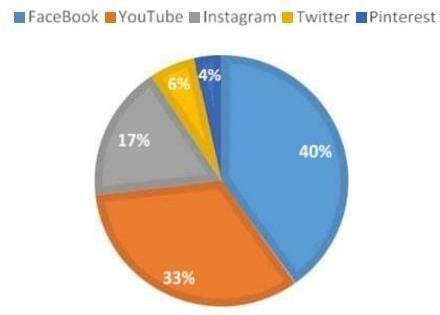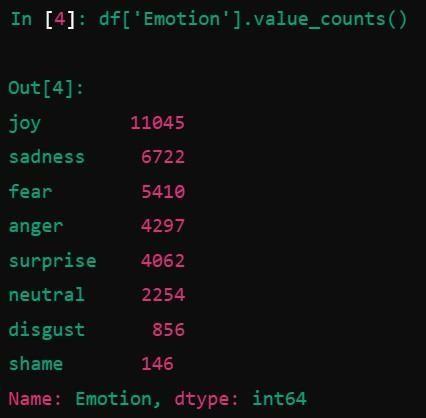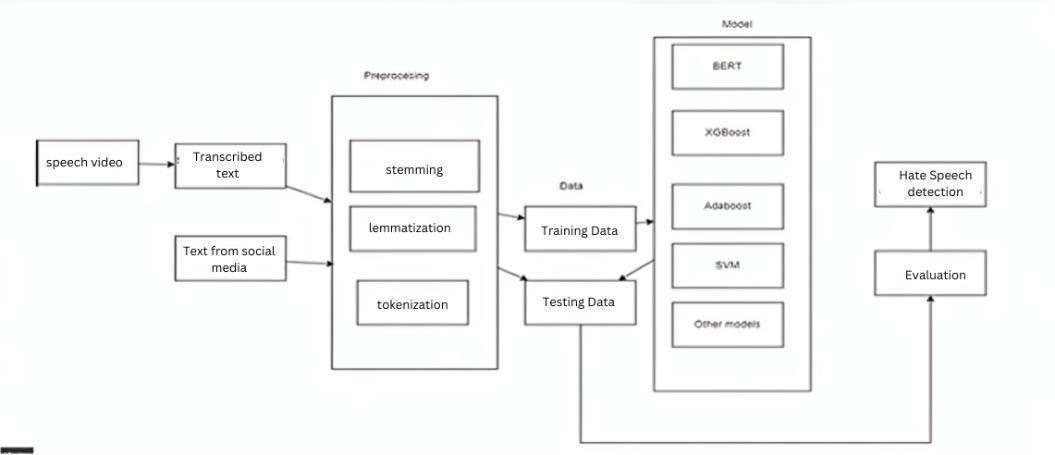
Volume: 11 Issue: 11| Nov 2024 www.irjet.net
International Research Journal of Engineering and Technology (IRJET) e-ISSN: 2395-0056 p-ISSN: 2395-0072


Volume: 11 Issue: 11| Nov 2024 www.irjet.net
International Research Journal of Engineering and Technology (IRJET) e-ISSN: 2395-0056 p-ISSN: 2395-0072
Vaibhav Shah1 and Soham Kulkarni2 and Chinmay Deodhar3 and Viraj Shah4 and Priyanca Gonsalves5
1 Dwakadas J. Sanghvi College of Engineering, Mumbai, India
2 Dwakadas J. Sanghvi College of Engineering, Mumbai, India
3 Dwakadas J. Sanghvi College of Engineering, Mumbai, India
4 Dwakadas J. Sanghvi College of Engineering, Mumbai, India
5 Dwakadas J. Sanghvi College of Engineering, Mumbai, India
Abstract - Political hate speech is an expression that is conveyed from a person or a group towards other person or group as an attack using various media. It can be found in a variety of online and offline contexts, including social media, news articles, and public speeches. Political hate speech can result in various negative consequences like public unrest , riots and protests and increased criminal activity. This project will develop a novel approach to political hate speech detection that combines machine learning and NLP techniques. The approach mentioned in this work would identify and note the features that determine the hate speech. These features may include keywords, phrases, and sentiment. After the features are successfully extracted from the raw text , they are input to the machine learning models which will predict if the speech contains hate. The input data can be in any format like text, audio files, or even YouTube URLs and it will classify what type of emotion and the percentage of hate speech comes from it. The machine learning model mentioned in the work will be trained on a large publicly labelled dataset. The developed model will also predict the emotion of the given input sample and classify it to various parameters like joy , sadness, anger ,surprise , etc. Our proposed work will be based on a text dataset of political speeches and articles. The results of the work will be reviewed in terms of accuracy and flawlessness of the model to predict the correct label. The proposed approach will also be compared to existing hate speech detection systems. In this work we have implemented the task in different machine learning algorithms including adaboost , decision tree and random forest [1] [3] [5].
Key Words: Political hate speech, Emotion Detection, Automatic detection, Machine learning, Natural language processing (NLP), Feature extraction, Sentiment analysis, Classification.
The widespread nature of political hate speech presents a serious danger to individuals, communities, and democratic societies. This damagingtypeofexpression canprovokeviolence,
underminesocialunity,andsilencethosewhoarealready marginalized. With the growth of online platforms and social media, the reach and influence of political hate speech have increased, making it more critical than ever tocreateeffectivestrategiesfordetectionandmitigation. The main goal of detecting political hate speech is to recognize and categorize instances of this harmful language across different forms of communication, such as social media posts, news articles, and public speeches [8].

Wecan:Preventandprotectpeopleorgroupsfromharm, Prevent cyberbullying from occurring in the first place, help the police and courts: Hate speech can be traced in order to assist both the law enforcement and legal processin bringing a perpetrator of hate crime to justice [2]. In a nutshell, political hate speech reaches even the mostsensibleofindividual'smodesofdetection,whichin itself proves that individuals can be protected further. This has been interpreted to mean support for further investigationof the political hate speech through novel means that perpetuates further discussions of such continuations.[5].

(IRJET) e-ISSN: 2395-0056 p-ISSN: 2395-0072 Volume: 11 Issue: 11| Nov 2024 www.irjet.net
Literature Related to Existing System : Abro et al. (2020)implementedNaïveBayesmodelforhatespeech detectionandonadatasetlabelledfromCrowdflowerand achieved 87% accuracy for the classification task [1].Its drawback is that it does not have any other algorithm except Naïve Bayes. Alaoui et al. (2022) implemented various algorithms including SVM, KNN, Decesion Tree, AdaboostandNaïveBayesonadatasetcontaining14500 tweetsamongwhichNaïveBayesalgorithmwashighest performingwith79%accuracy[2].Shubhangetal.(2023) achieved77%accuracyondatasetscollectedfromvarious sourceslikestrimfront,kaggle,etc[3].Md.Getal.(2021) implementedhatespeechdetectiononadatasetobtained from twitter containing 24000 tweets and implemented many algorithms among which SVM was the highest performing[4].
Literature Related to Methodology/ Algorithms : Bothe etal.(2019)describesthemethodologyofconversionof audioorvideototextortranscriptionoftextfromaudio filesandapplicationofalgorithmsforthesame[5].Abroet al.(2020)hasimplementedhatespeechclassificationin Naïve Bayes model with accuracy of 87% and has described the methodology for the preprocessing, tokenizationandapplicationofmodelforthedatasetfrom twitter [1]. Ombui et al. (2019) have implemented the methodology for implementation of SVM, LSTM, Naïve BayeswithSVMhavinghighestaccuracyof77%.Alaouiet al.(2022)haveimplementedthecompletemethodology for web scraping from twitter and application of data miningtoclassifythetweetsashateornon-hate.Shuklaet al. (2022) have implemented the methodology for hate speechdetectiononhindilanguagetweetsandpostsfrom other social media datasets which is available on site codalabs[7].
Literature Related to Technology/ Tools/ Frameworks : Abroetal.(2020)implementedNaïveBayesmodel for hate speech detection and on a dataset labelled from Crowdflower and achieved 87% accuracy for the classificationtask[1].Itsdrawbackisthatitdoesnothave any other algorithm except Naïve Bayes. Alaoui et al.. (2022) implemented various algorithms including SVM, KNN, Decesion Tree, Adaboost and Naïve Bayes on a dataset containing 14500 tweets among which Naïve Bayes algorithm was highest performing with 79% accuracy[2].
Abroetal.(2020)implementedNaïveBayesmodel forhatespeechdetectionandonadatasetlabelled fromCrowdflowerandachieved87%accuracyfor the classification task.Its drawback is that it does not have any other algorithm except Naïve Bayes.
Alaoui et al. (2022) implemented various algorithms includingSVM,KNN,DecesionTree,AdaboostandNaïve Bayes on a dataset containing 14500 tweets among which Naïve Bayes algorithm was highest performing with79%accuracy.Ombuietal.(2019)haveimplemented themethodology forimplementationofSVM,LSTM,Naïve BayeswithSVMhavinghighestaccuracyof77%[6].Mdet al. (2021) implemented hate speech detection on a dataset obtained from twitter containing 24000 tweets andimplemented many algorithms among which SVM was the highest performing [4]. Shukla, S., Nagpal, S. and Sabharwal, S. (2022) presents the model thatcan detect hatespeechinrealtimehas2stagearchitectureapplying BERT encoder, using CNN followed by sigmoid layer. Dataset contains posts extracted from YouTube and Twitter[7].
A schematic representation of the system model for the proposedmulti-modalhatespeechdetectionisillustratedin Fig.1.Inthefirststageofvideodatacapturing,weprocess the data for several operations including image resizing, noise removal, and transformation of the data into image, text,andaudio.Thefeaturesofaudiodataareextractedfrom boththetimeandfrequencydomainsbeforebeingforwarded thethemodel.Subsequently,images,textandaudioofthe extractedfeatureswillbesuppliedtothemodel.Themodel predictswhethertheinputisahatespeechornotandassigns the respective label to the input data. Subsequently, to establish the final decision prediction, a majority voting ensemblewillbeusedinwhichthecoredecisionbasicallyis, twoormoreexposedmodesofcommunicationmustbehate, inorderforthefinalpredictiontobeso[8][9].
Data Description and Pre-processing
Wehaveassembledthenecessarylabeleddatatoputintothe systemfortrainingwhichhastwoclasseshatredandnonhatred.Hatredfeelingsandexpressionsrelatestothefeelings of anger, fear, aggression, disgust, dislike, encountered in violentcommunicationsorwhatresearchcanconsiderthe injuriousorviolentfeelingsattheirmostextremelevel[7]. Conversely, non-hatred feelings or positive emotions suchas those described by [8] tend to include the aspect of enjoyment or anything positive that one would want to indulge in such as among others pleasure, gladness, excitementetc.Intotal,wehave1051videodatacollected from3movies,2webseries,3hatespeech,and4positive emotions in order to study hate and positive emotions addressing80%fortrainingand20%fortestingpurpose.


Fig 2 Emotiondetectionfromtext
Fig 3 . Thedistributionofhatespeechandnonhate speech
Feature extraction and feature selection:
Counter Vectorizer:
Thebag-of-words(BOW)istherepresentationoftextdata
thatisconvertedtoavectorform.Thisvectorrepresentsthe inputdataaccordingtohowmanytimesthewordappearsin thetext
Term Frequency-Inverse Document Frequency (TFIDF):
TFIDFisamathematicalrepresentationofnaturaltextin which the importance of each word is assessed according to thenumberoftimesthetermappearsinthetext.Theformula thatisusedtocomputethetf-idfis:
2395-0072
Theproposedsystemarchitectureforpoliticalhatespeech detectionfromsocialmedialeveragesacombinationofweb scraping techniques and advanced natural language processing(NLP)algorithms.
Thedatacollectionmoduleobtainsinformationfromsocial mediapages,newswebsites,articles,andothergeotexts.An example of the techniques used involves web scraping for posts, comments, and articles relating to political discourse. BeautifulSoup,orScrapyareotherwebscrapingtoolsused tocollectdatafromthespecifiedwebsitesinamannerthatis withintherequiredethicalstandardsanddoesnotbreach anyprivacylaws.Theinformationcollectedisfirstprocessed andpreparedbeforeitisusedinthenextmodulesfordata analysis[2].
Themaintaskofthealgorithmsandthemodelsincludedin the NLP module is the detection of hate-speech in text documents. The understanding of political discussion is supportedbyadvancedNLPapproaches,includingsentiment analysis,entityrecognition,andlanguagemodelembeddings. Suchlanguagemodels,whichcanbeusedtoembraceawider range of political discourses, differentiate between the acceptable and unacceptable forms of expressing disagreement using politically charged language. The NLP moduleintegratescontextsensitivity,allowingthesystemto becustomizedformultiplepoliticalcontextsandlinguistic forms.
Random Forest is also called an ensemble learning techniquewhichbuildsnumerousdecisiontreeswhenbeing trained and can then use majority voting or averaging methodwhenmakingpredictions.TheDecisionTreeworks undersupervisionbypartitioningasetofdataintodisjointed subsetsaccordingtotheinput characteristicsfeaturesand theoutputisinatree-structuredmodelofdecisionsandtheir outcomes.AdaBoostisakindofensemblelearninganditis basedontheconceptofcombbymanysimpleclassifiersto buildastrongonebyre-weightingtheincorrectlyclassified samples.

International Research
of Engineering and Technology (IRJET) e-ISSN: 2395-0056 p-ISSN: 2395-0072 Volume: 11 Issue: 11| Nov 2024 www.irjet.net

The proposed system architecture aims to detect political hatespeechfromsocialmediaplatformsusingwebscraping techniques and advanced NLP algorithms. It incorporates ethicalconsiderationstoensurefairness,transparency,and userprivacy,andtomitigatepotentialbiasesandsafeguard user rights. This comprehensive solution aims to create a saferonlineenvironmentforpoliticaldiscourse.
The study evaluated three machine learning models: Random Forest, Decision Tree, and AdaBoost, for a hate speechdetectionsystem.AdaBoost,whichcombinedweak learners,wasthemostrobustinaccuratelyclassifyinghate speech instances, outperforming the other models. Their performance was analyzed by confusion matrices to determine classification accuracy and errors for the Random Forest, Decision Tree, and AdaBoost models. In Random Forestaccuracywasmeasuredupto90percentandDecision Tree was measured up to 89 percent mobile. AdaBoost proved with 93 % accuracy, the way of how the weak learners can be combined to enhance the predictive capability.
Regardingthefindingsofthisresearch,itisestablishedas follows:Thisresearchaimstodevelopandassessmachine learning such as Random Forest, Decision Tree, and AdaBoosttodeterminetheexistenceofpoliticalhatespeech insocial media.These modelsasshowninthe resultshad fairaccuracywithAdaBoosthavingthehighestat93%while RandomForests had 90% and Decision Trees at 89% all
infer that technology does not suffice for hate speech problems. The models were able to recognize different patterns in toxic content, however, they had issues with
understanding context, or intent and interpersonal communication.Inaddition,theethicalimplicationsofsuch models,includingundulybiastrainingdataandconcernsof censorshipsignificantlyemphasizetheneedforaveryopen model that will also be continuously refined. Finally, we argue that although AI has great potential to address the problem of political hate speech, AI needs to be delegated with human supervision and accountability for the satisfactorysolution.
1. Abro, S., et al.: Automatic hate speech detection using machine learning: A comparative study. International Journal of Advanced Computer Science and Applications 11(8). doi:10.14569/ijacsa.2020.0110861(2020).
2. Alaoui, S.S., Farhaoui, Y., Aksasse, B.: Hate speech detection using text mining and machine learning. International Journal of Decision Support System Technology 14(1), 1–20. doi:10.4018/ijdsst.286680 (2022).
3. Boishakhi,F.T., Shill,P.C.,Alam, Md.G.: Multimodal hate speechdetectionusingmachinelearning.In:2021IEEE International Conference on Big Data (Big Data) [Preprint]. doi:10.1109/bigdata52589.2021.9671955 (2021).
4. Bothe, H.H.: Audio to audio-video speech conversion with the help of Phonetic Knowledge Integration. In: 1997 IEEE International Conference on Systems, Man, and Cybernetics. Computational Cybernetics and Simulation [Preprint]. doi:10.1109/icsmc.1997.638237(nodate).

Volume: 11 Issue: 11| Nov 2024 www.irjet.net
International Research Journal of Engineering and Technology (IRJET) e-ISSN: 2395-0056 p-ISSN: 2395-0072
5. Ombui, E., Muchemi, L., Wagacha, P.: Hate speech detection in code-switched text messages. In: 2019 3rd International Symposium on Multidisciplinary Studies and InnovativeTechnologies(ISMSIT) [Preprint]. doi:10.1109/ismsit.2019.8932845 (2019).
6. Parmar, M., et al.: Sentiment Analysis on interview transcripts: Anapplication of NLP for quantitative analysis. In: 2018 International Conference on Advances in Computing, Communications and Informatics (ICACCI) [Preprint]. doi:10.1109/icacci.2018.8554498(2018).
7. Radha,N.:Videoretrievalusingspeechandtextinvideo. In: 2016 International Conference on Inventive Computation Technologies (ICICT) [Preprint]. doi:10.1109/inventive.2016.7824801(2016).
8. Shubhang, S., et al.: Identification of hate speech and offensive content using bi-gru-lstm-cnn model. In: 2023 International Conference on Intelligent Data CommunicationTechnologiesandInternet of Things (IDCIoT) [Preprint]. doi:10.1109/idciot56793.2023.10053415(2023).
9. Shukla, S., Nagpal, S., Sabharwal, S.: Hate speech detection in Hindi language using Bert and Convolution Neural Network. In: 2022 International Conference on Computing, Communication, and Intelligent Systems (ICCCIS) [Preprint]. doi:10.1109/icccis56430.2022.10037649(2022).
10. Solitana, N.T., Cheng, C.K.: Analyses of hate and nonhate expressions during election using NLP. In: 2021 International Conference on Asian Language Processing (IALP) [Preprint]. doi:10.1109/ialp54817.2021.9675186(2021).